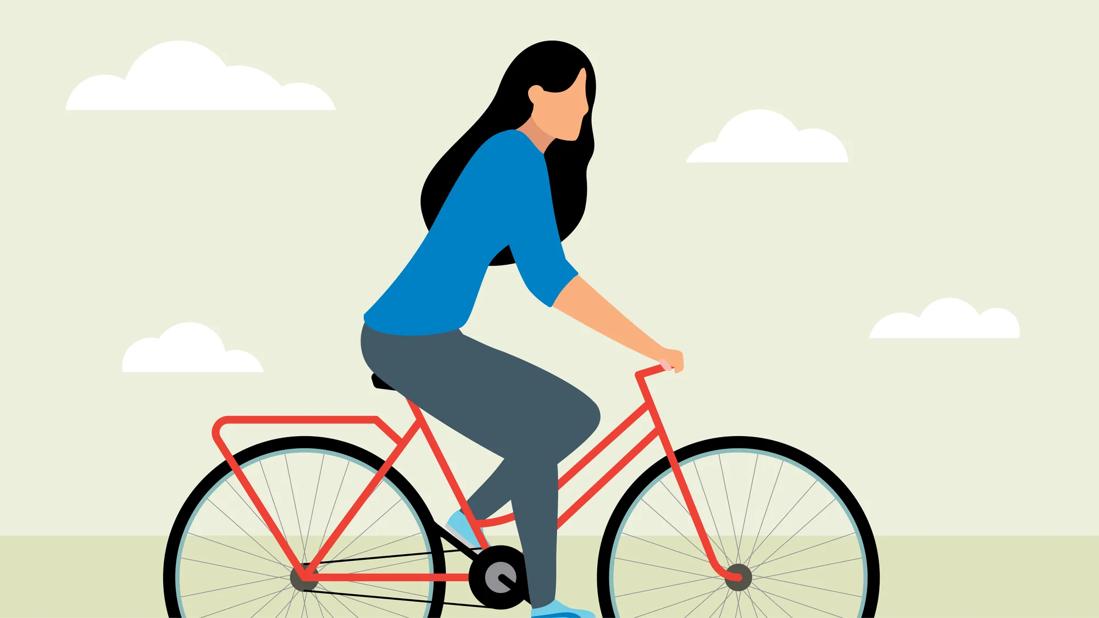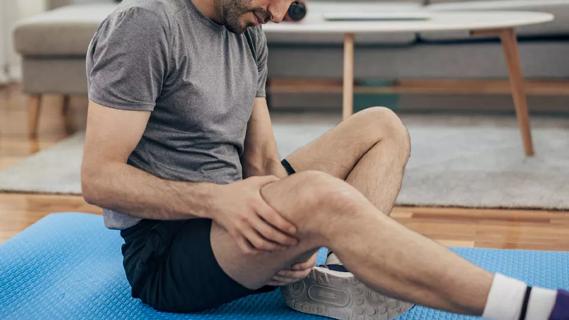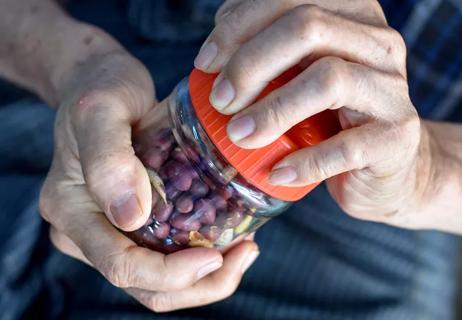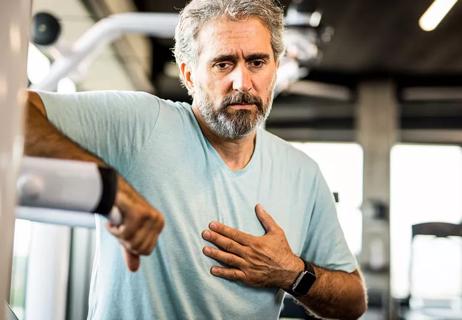Stretching, water-based activities, cycling and treadmill training can all bring benefits

Spasticity can make muscles spasm and leave them stiff and tight. It’s a common side effect of certain neurological conditions — and it can complicate daily life by making movement difficult or even painful.
Advertisement
Cleveland Clinic is a non-profit academic medical center. Advertising on our site helps support our mission. We do not endorse non-Cleveland Clinic products or services. Policy
Getting those affected muscles to work better may come down to … well, working those muscles through exercise and stretching. Both activities can help you reduce and manage spasticity.
So, let’s get moving in that direction with the help of physical therapist and clinical rehab specialist Randy Karim, PT, DPT.
Exercise and stretching can’t cure spasticity. But they can offer some temporary relief and help you limit the long-term impact of spasticity when it comes to muscle pain, stiffness and general movement.
Muscle groups commonly affected by spasticity include those found in your:
Exercise may result in a reduction in spasticity that lasts anywhere from a few minutes to a few days. (The variation typically depends on the amount of spasticity present and the type of activity.)
“Exercise can have a very real, calming effect on the spasticity,” says Dr. Karim.
Here are a few to try.
If you live with spasticity, Dr. Karim says it’s vital that you think of stretching as a healthy habit like brushing your teeth.
“Stretching is the same kind of daily health maintenance,” he says. “It’s especially helpful for someone living with a condition where there is a high likelihood that your muscles can become stiff in the future.”
Advertisement
Prolonged stretching can help you maintain your range of motion and prevent contracture (the tightening of muscles that make it difficult to move your joints). It’s best to keep motions slow and controlled, too.
Combining stretching with calming, deep breathing exercises also can be very effective.
“An example of an effective breathing pattern is one where your exhale lasts longer than your inhale,” Dr. Karim explains. “This pattern has a calming effect on your central nervous system. And it will help you to have a better stretch, especially if you have spasticity.”
Ideal stretches include:
Think of how your calves feel walking up a hill. Stepping onto a wedge-shaped incline board can give your calves the same feeling to address spasticity.
The slant board should be pitched at a 15- to 25-degree incline to get an ideal stretch. For maximum impact, both of your heels should be on the board. Keep your knees straight and lean your hips forward to target your calves. (Hold onto a stable surface for balance.)
Dr. Karim suggests keeping your incline board in a room you visit a lot (such as your bathroom for use when you’re at the sink). “That way you can sneak in a stretch throughout the day, rather than just having a specific dedicated time in your day to stretch,” he says.
Incline boards can be purchased online for a relatively modest cost. They’re also relatively simple to make if you’re handy.
Remember doing push-ups in gym class? This is the same thing, only you do it against a wall.
Stand a few feet away from the wall and stretch your arms until your palms are flat against it. Then, bend your elbows and bring your upper body toward the wall. You’ll feel the stretch in your wrist muscles.
Dr. Karim stresses not to skimp on balance or safety when doing this. “You shouldn’t feel any discomfort either,” he notes.
If you’re sitting at home or work most of the day, make getting up a priority. Aim to change your position at least once an hour and set a goal to stand for at least 30 minutes total per day. (Using an adjustable workstation or elevated table for tasks can help you hit that mark.)
Studies show that the rhythmic movements involved in cycling can help reduce spasticity in the lower extremities, with benefits achieved in as little as 20 minutes of unloaded (no resistance) pedaling.
It’s important to start slowly and build gradually, advises Dr. Karim. If you notice your foot slipping off the pedal, you may be triggering a spasm in your calf. Using a pedal strap and a slower pace may help prevent this from happening.
Advertisement
Consider using a timer for interval training, too. (For example, pedal for two minutes then take a rest break for one minute.)
Researchers also report that treadmill training can help manage spasticity. Ditto for arm cycling.
“To be clear, all of these have a temporary effect on the spastic muscle,” he adds.
Studies have shown that aquatic exercises can reduce spasticity and help improve quality of life. Water-based exercises would include swimming, walking in water or doing strengthening exercises with weights or pool noodles.
“These exercises had an elastic effect, meaning they made the muscle a little bit more flexible after being in the water,” says Dr. Karim.
Anyone exercising needs to be mindful of following best practices and listening to their body. For people living with spasticity, Dr. Karim says there are some specific considerations when exercising.
It’s best to consult with a physical or occupational therapist before starting your exercise routine.
“They can evaluate you and tailor a specialized program to meet your needs,” says Dr. Karim. “This is by far my primary recommendation for anyone before starting with specific exercises.”
If you have more severe spasticity, a neurologist or a physiatrist can help you decide whether certain equipment, techniques or movements can work in tandem with exercise to decrease spasticity.
Advertisement
Different times of day might be better for exercising to limit your spasticity. Some people may choose the morning, for instance, as that’s when their spasticity seems worse after lying in bed all night.
If you take medication to help your muscles relax, that may also affect when you choose to work out. “It’s wise to time your medication along with your exercise routine so it’s able to have more of an impact,” explains Dr. Karim.
Slow and steady wins the race when exercising with spasticity. “If you’re moving too fast, you may actually trigger a higher degree of spasticity versus moving in a slow and controlled fashion,” states Dr. Karim.
Whatever physical activity you do, it shouldn’t be painful. “You may have heard the saying ‘no pain, no gain,’” relays Dr. Karim. “But that’s a very inaccurate and dangerous phrase, especially when spasticity is present.”
Soreness or a slight muscle ache is common, of course. But a pain that feels sharp or a shooting pain that stops you in your tracks should be considered a warning sign that deserves attention.
“You should never push through that type of pain,” he emphasizes. “Feeling acute pain when performing a movement or exercise is a signal to your body that something’s wrong. Stop immediately and consult with your doctor or therapist.”
Advertisement
Spasticity looks and feels different for everybody. Figuring out an approach to managing it through exercise also looks different for everyone. What works for one person may not for another.
At the end of the day, you and your healthcare team can figure out the best course of action.
"Even though we may not be able to heal your spasticity, we do have treatment options to help improve your daily activities, mobility and quality of life,” reassures Dr. Karim.
Learn more about our editorial process.
Advertisement

Whether it’s crushed ice, a chilled gel pack or frozen corn, you’ve got options

These neurological conditions affect muscle movement in separate ways

Getting close to their care team, investing in accessibility and implementing safe sleeping practices are just a few ways to support your child’s growth and development

Your child’s care team, nonprofit organizations, patient groups and more are here to support you

This treatment can be an effective way to calm muscle stiffness and spasms from nerve damage

Stretching, heating pads and massage guns can provide quick relief

Turns out your health really is in your hands

Seven doctor-approved ways to ease the pain

The best parenting style balances enforcing rules and showing plenty of love

Tips include cutting back on sugar, focusing on exercise and managing stress

It can be harder to let go when you’ve invested time, energy and emotions — but it might be the healthier choice long term